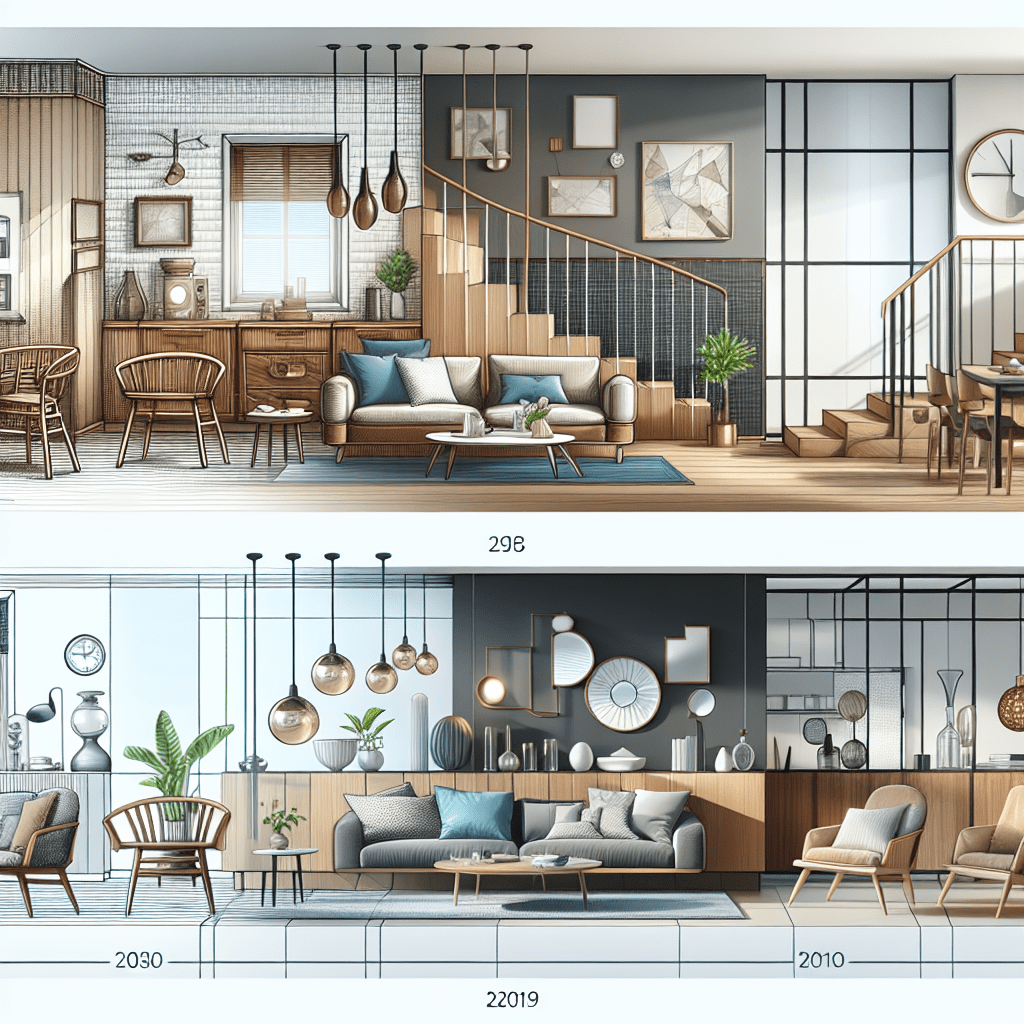Interior Design has come a long way over the years, evolving from simple and practical to complex and stylish. The evolution of modern Interior Design has been driven by a variety of factors, including changes in technology, cultural influences, and the shifting preferences of homeowners. Today, Interior Design is all about finding the perfect balance between function and style, creating spaces that are both practical and visually appealing.
The Early Days of Interior Design
Interior Design has been around for centuries, with early examples dating back to ancient civilizations like the Egyptians and the Greeks. In these early days, Interior Design was purely functional, focused on creating spaces that were practical and comfortable. Furniture was often simple and sparse, with an emphasis on durability and utility.
As societies evolved and became more sophisticated, so too did Interior Design. The Renaissance period saw a renewed interest in art and architecture, leading to more decorative and ornate interiors. The Baroque and Rococo styles of the 17th and 18th centuries took this even further, with lavish furnishings and elaborate decorations becoming the norm.
The Rise of Modernism
The 20th century brought about a major shift in Interior Design with the rise of the modernist movement. The modernists rejected the decorative excesses of the past in favor of a more minimalist and functional approach. Influential designers like Le Corbusier and Mies van der Rohe championed clean lines, open spaces, and the use of industrial materials like steel and glass.
Modernism became the dominant style in architecture and design throughout much of the 20th century, influencing everything from furniture to lighting to color schemes. The focus was on simplicity, efficiency, and the use of innovative new materials and technologies. Interiors became more open and flexible, with an emphasis on natural light and the integration of indoor and outdoor spaces.
The Postmodern Era
In the 1980s and 1990s, the postmodern movement emerged as a reaction against the perceived rigidity and uniformity of modernism. Postmodern designers embraced eclectic styles, mixing and matching elements from different time periods and cultures. They emphasized individuality and self-expression, creating spaces that were bold, quirky, and playful.
Postmodern interiors often featured bright colors, bold patterns, and a mix of high and lowbrow influences. Designers like Philippe Starck and Patricia Urquiola pushed the boundaries of traditional design, challenging conventions and blurring the lines between art and function.
The Digital Age
Today, Interior Design continues to evolve in response to the rapid pace of technological change and cultural shifts. The rise of digital media and social networking has had a profound impact on how we perceive and interact with design. Platforms like Pinterest and Instagram have democratized the design process, allowing anyone to share and discover new ideas and trends.
Smart home technology has also become increasingly integrated into Interior Design, with features like automated lighting, climate control, and security systems becoming standard in many homes. Designers are now faced with the challenge of balancing the demands of technology with the timeless principles of good design.
Function Meets Style
In today’s Interior Design landscape, the key is to find the perfect balance between function and style. A well-designed space should not only look good, but also serve the needs of its users. This means considering factors like comfort, ergonomics, and sustainability, as well as aesthetics.
Designers are increasingly looking to nature for inspiration, incorporating organic forms, materials, and colors into their work. Biophilic design, which seeks to connect people with nature through their built environment, has become a major trend in recent years. Plants, natural light, and earthy textures are all ways to bring the outdoors inside and create a sense of harmony and well-being.
Conclusion
The evolution of modern Interior Design has been a fascinating journey, from the simple and practical interiors of ancient civilizations to the bold and eclectic spaces of today. Designers continue to push the boundaries of what is possible, creating spaces that are both functional and stylish.
As technology and cultural influences continue to shape the way we live and work, Interior Design will no doubt continue to evolve. The key is to embrace change while staying true to the timeless principles of good design, creating spaces that are both beautiful and practical for years to come.
FAQs
1. What are some key elements of modern Interior Design?
Some key elements of modern Interior Design include clean lines, open spaces, and the use of natural materials. Minimalism, sustainability, and functionality are also important considerations.
2. How can I incorporate modern design into my home?
You can incorporate modern design into your home by decluttering, using a neutral color palette, and incorporating natural elements like wood and stone. Pay attention to lighting and layout to create a sense of openness and flow.
3. What are some popular trends in modern Interior Design?
Some popular trends in modern Interior Design include biophilic design, minimalist furniture, and smart home technology. Mixing textures, patterns, and styles is also a popular way to create a visually interesting space.
TIP:
When designing your space, don’t be afraid to mix and match styles and elements to create a truly unique and personal look. Remember, the key is to create a space that reflects your personality and lifestyle while also being functional and stylish.
#Evolution #Modern #Interior #Design #Function #Meets #Style
